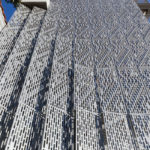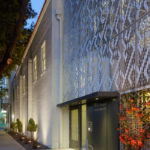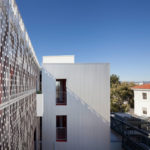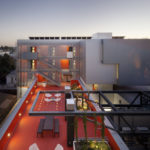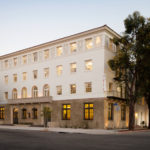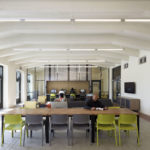Reviving a Community Landmark: 28th Street Apartments
Project's Summary
Reviving a Community Landmark with Innovative Design Strategies
The 28th Street Apartments project, located in Los Angeles, is a stunning example of how architecture can breathe new life into a historical building. Originally built as a YMCA in 1926, the Spanish Colonial Revival structure was designed by renowned architect Paul R. Williams and served as a recreational space for the African American community. However, over the years, the building fell into disrepair. Fortunately, the Koning Eizenberg Architecture studio was tasked with restoring and expanding the building, and they did not disappoint.
Innovative Strategies that Balance Utility and Amenity
The restoration of the 28th Street Apartments was a challenging task, as the building needed to be enlarged to accommodate housing units while still preserving its key historic features. The architects decided to add a new residential wing, which was constructed with a thin, cross-ventilated design. This allowed for more housing units to be added while maintaining the building's aesthetic charm.
One of the most innovative design strategies employed by the architects was the integration of new building systems that released the existing rooftop for use as a garden and social space. This not only created additional outdoor amenities for residents, but it also linked the old and new parts of the building.
A Sustainable and Modern Touch
The architects also incorporated a sustainable and modern touch to the 28th Street Apartments by including a vertical photovoltaic array that shades the building's southern side. This not only helps to reduce energy consumption but also gives the building a contemporary feel. The northern side of the building is wrapped with perforated metal screens that feather at the corners to frame views of the city. This provides residents with breathtaking views of their surroundings while adding a touch of elegance to the building's exterior.
A Community Landmark Restored
The restoration and expansion of the 28th Street Apartments have re-established the building's role as a community landmark. The innovative design strategies employed by the architects have leveraged utility into amenity and created an unexpected approach to heritage. The restored building provides residents with modern amenities while preserving the building's historic charm. It is a testament to the power of architecture to revive and transform a community landmark.
Read also about the Harmonious Blend of Tradition & Modernity: Brick + Wood Fence project
